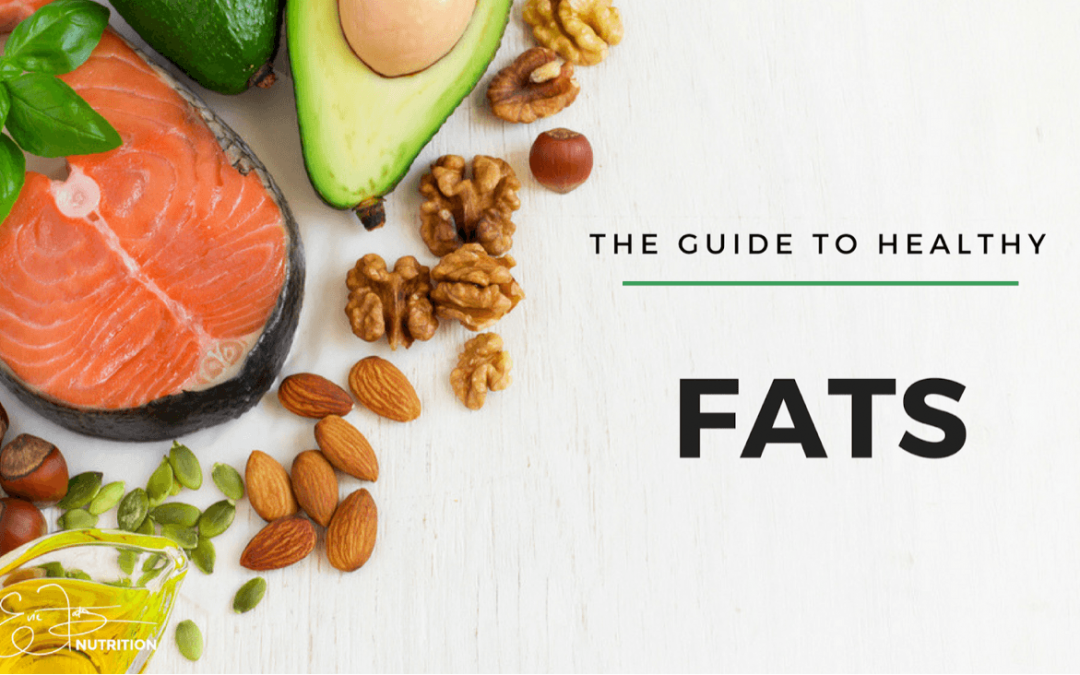The Guide to Healthy Fats
We need adequate fat to support metabolism, signal cells to support hormone production, immunity and nutrient absorption. Having enough fat in your diet will also keep you full between meals and help regulate blood sugar.
A good definition of “healthy fat” is “relatively unprocessed fats from whole foods”.
Some excellent sources of “healthy fats” include:
 Cut up 4 pieces of uncured bacon (I love Nueske’s)!
Cook the bacon over low or medium-low heat until cooked to your desired doneness. Usually about 3-5 minutes.
Meanwhile, slice the avocados in half and remove the pits. Scoop half of the flesh out of each avocado half (leave half undisturbed) and transfer to a bowl.
Mash the avocado in the bowl. Stir in chopped grape tomatoes, thinly sliced lettuce, juice from one lime, and the cooled, drained bacon pieces.
Scoop the mixture back into the avocado halves.
Cut up 4 pieces of uncured bacon (I love Nueske’s)!
Cook the bacon over low or medium-low heat until cooked to your desired doneness. Usually about 3-5 minutes.
Meanwhile, slice the avocados in half and remove the pits. Scoop half of the flesh out of each avocado half (leave half undisturbed) and transfer to a bowl.
Mash the avocado in the bowl. Stir in chopped grape tomatoes, thinly sliced lettuce, juice from one lime, and the cooled, drained bacon pieces.
Scoop the mixture back into the avocado halves.
- Avocado and avocado oil
- Olives and olive oil
- Coconut and coconut oil
- Nuts
- Fish
- Egg yolks (quality counts here!)
- Grass-fed butter
- Corn oil
- Safflower Oil
- Sunflower Oil
- Factory farmed meat, eggs and dairy
- Soybean Oil
- Canola Oil
BLT Avocados
 Cut up 4 pieces of uncured bacon (I love Nueske’s)!
Cook the bacon over low or medium-low heat until cooked to your desired doneness. Usually about 3-5 minutes.
Meanwhile, slice the avocados in half and remove the pits. Scoop half of the flesh out of each avocado half (leave half undisturbed) and transfer to a bowl.
Mash the avocado in the bowl. Stir in chopped grape tomatoes, thinly sliced lettuce, juice from one lime, and the cooled, drained bacon pieces.
Scoop the mixture back into the avocado halves.
Cut up 4 pieces of uncured bacon (I love Nueske’s)!
Cook the bacon over low or medium-low heat until cooked to your desired doneness. Usually about 3-5 minutes.
Meanwhile, slice the avocados in half and remove the pits. Scoop half of the flesh out of each avocado half (leave half undisturbed) and transfer to a bowl.
Mash the avocado in the bowl. Stir in chopped grape tomatoes, thinly sliced lettuce, juice from one lime, and the cooled, drained bacon pieces.
Scoop the mixture back into the avocado halves.
Looking for more great recipes? Get a free week of EAT!
[dvk_social_sharing]

0 Comments